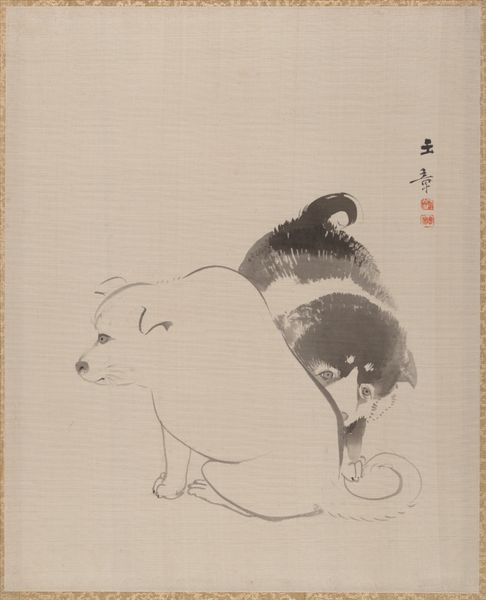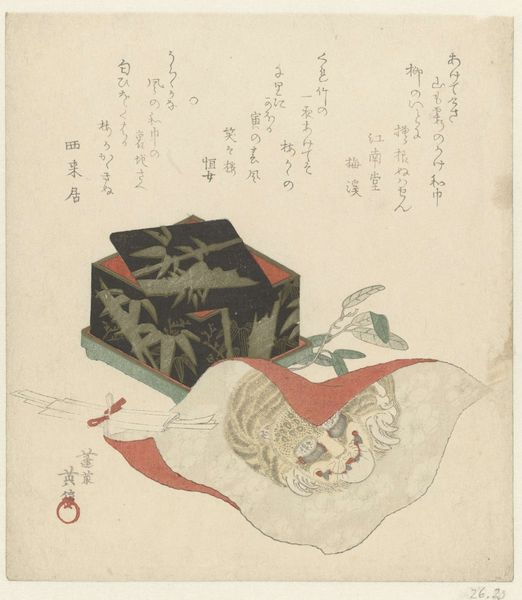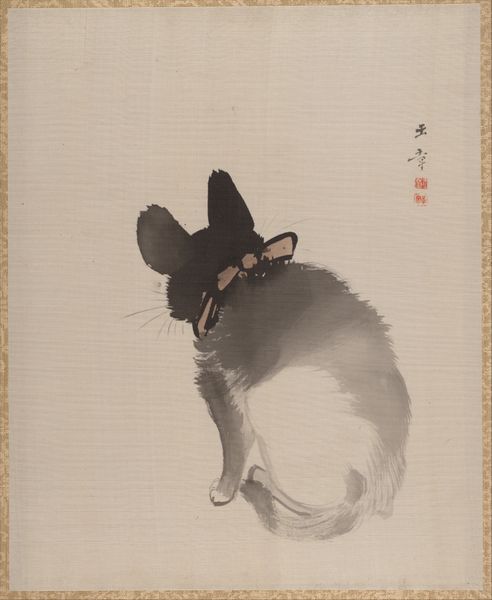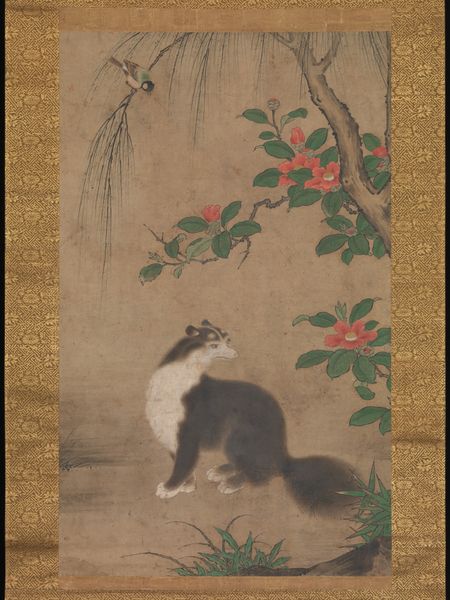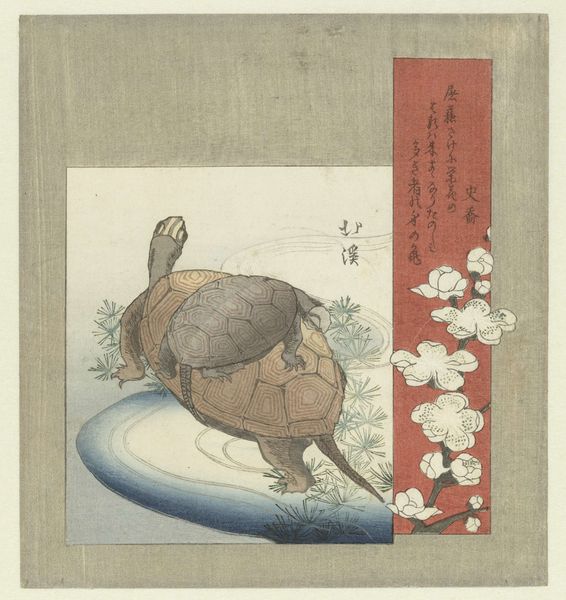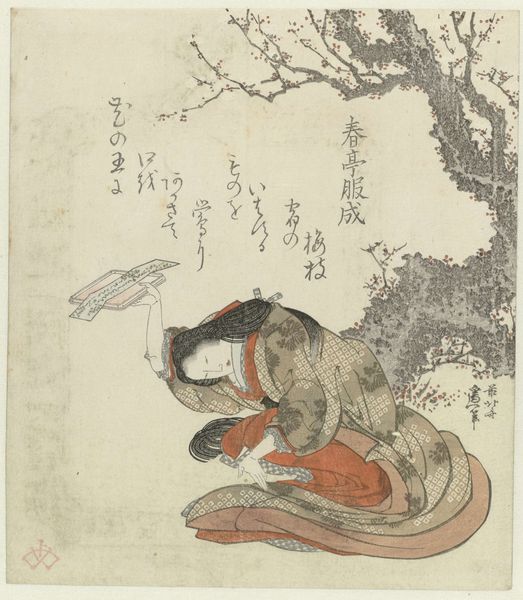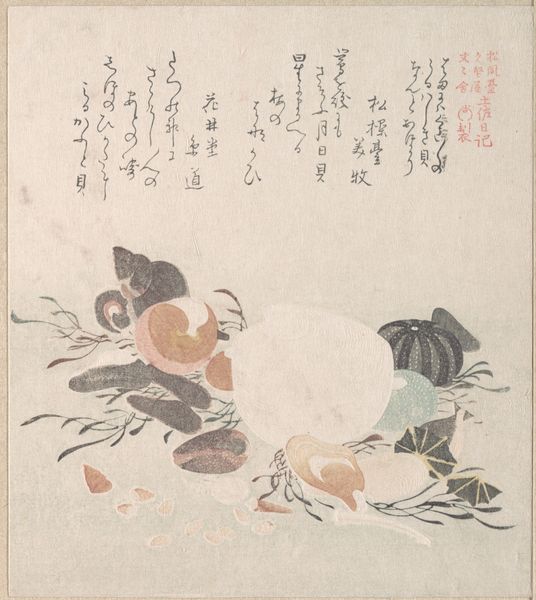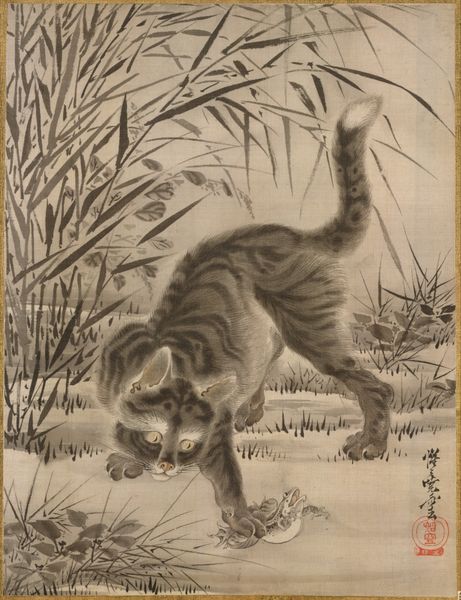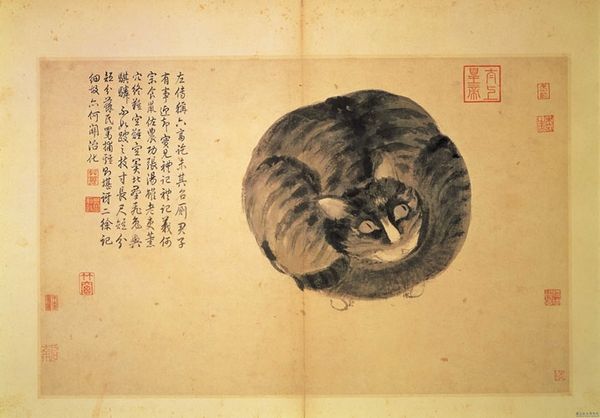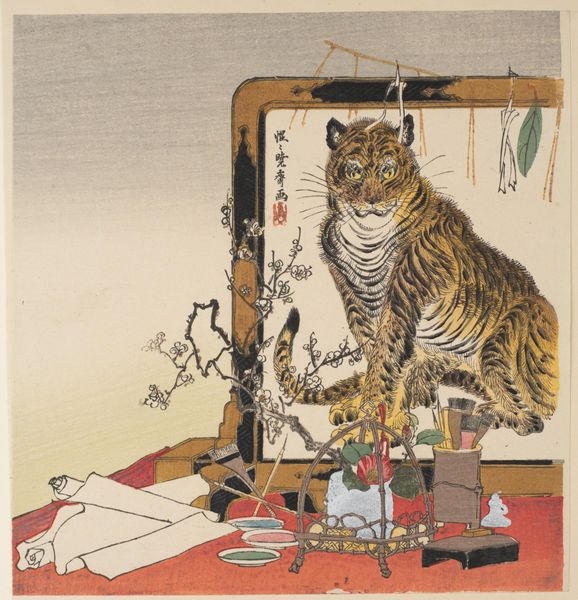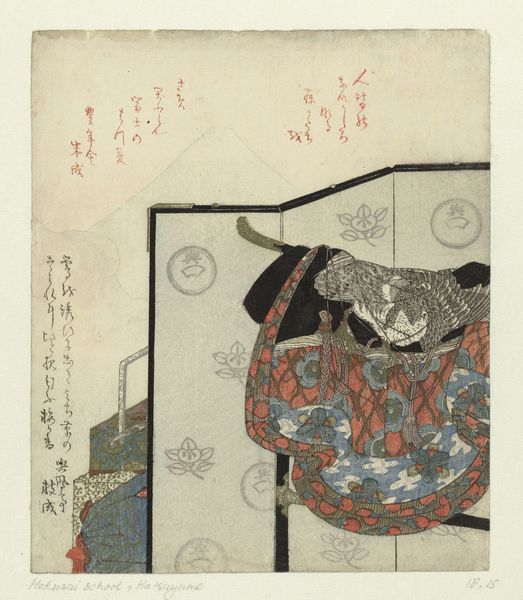
Dimensions: 14 3/4 x 11 in. (37.5 x 27.9 cm)
Copyright: Public Domain
Curator: It's the stillness that strikes me first. That palpable tension before the pounce. Editor: Indeed. This piece is called "Cat Watching a Spider" by Oide Toko. Created sometime between 1888 and 1892, during the Meiji period, it provides a fascinating glimpse into the popular Ukiyo-e style. Curator: Ukiyo-e, "pictures of the floating world"... Yet, here, there is a clear class divide. We see the pampered domestic cat adorned with a vibrant patterned collar, contrasting with the vulnerable spider, suggesting not just a predator-prey dynamic but also societal disparities. Editor: The rise of the merchant class in the Edo period definitely fueled the Ukiyo-e genre, and images of domestic animals like cats gained popularity reflecting a more urban, bourgeois lifestyle. Consider how prints were commissioned as markers of taste. Curator: Absolutely, and in this period of rapid modernization and Westernization in Japan, we can consider how domestic animals began to represent new ideas about family structures, and perhaps gender dynamics. Cats themselves have a complicated history, having transitioned from practical rodent control to cherished family member. Editor: Moreover, the work offers insight into Japanese aesthetic principles, especially regarding composition and use of space. The emptiness surrounding the figures draws your eye intensely toward their interaction. The use of asymmetrical balance directs attention toward this scene. Curator: What is particularly compelling is this sense of anticipation. It freezes a moment in time but reminds us that systems of power will constantly seek an equilibrium, or an advantage over another, creating instability and social stratification. Editor: An astute point. Beyond just the visual pleasure, what you're suggesting, is that images of domesticity also reflected and perhaps, reinforced, specific societal values during this transitional Meiji period. The choice of subjects isn't accidental. Curator: Not at all. Through a contemporary lens, looking at what power structures existed and continue to exist is paramount to understanding and interpreting art like this, and recognizing the animal here allows one to observe from all lenses. Editor: I think, perhaps, both of us come to a greater appreciation of the intersectionality of Oide Toko's artwork when considering the role that political power has always been expressed through art in many different forms. Curator: That convergence allows for a fuller interpretation and dialogue for future generations to consider as Japan was experiencing enormous shifts.
Comments
No comments
Be the first to comment and join the conversation on the ultimate creative platform.
